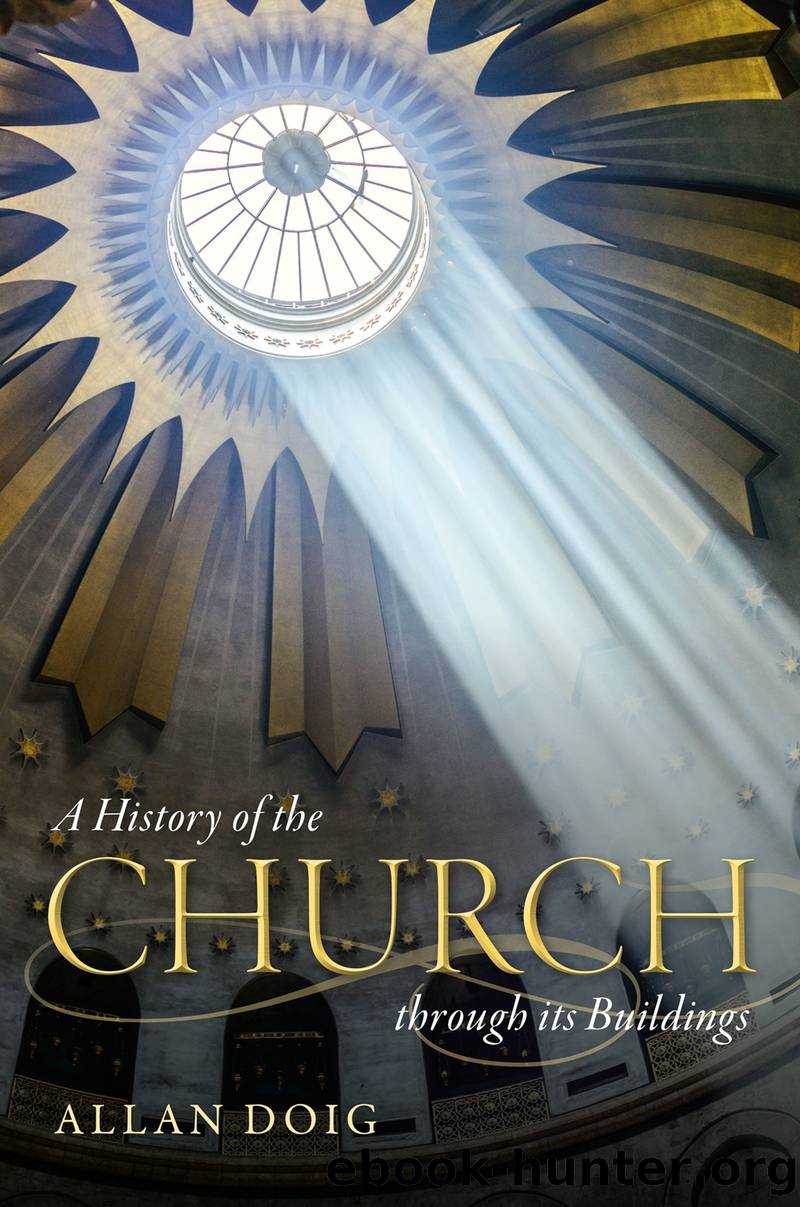A History of the Church Through Its Buildings by Allan Doig;

Author:Allan Doig; [Doig, Allan]
Language: eng
Format: epub
ISBN: 9780192607829
Publisher: Oxford University Press USA
Published: 2020-11-18T00:00:00+00:00
The Mosque as Cathedral, and the New Building
Cordoba was not back in Christian hands until 1235, and the Great Mosque was then used as the cathedral after the Chapter gained control of the former site of the cathedral of St Vincent. The existing mosque was, of course, unsuited to Christian worship, but they had to make do while disputes raged over the future of the building. From early on, Christian altars and chapels were introduced into the existing fabric, including the original Villaviciosa Chapel and the Capilla Real by Alphonso X (r. 1252â84). In 1401, it was decided that the twelfth-century mosque of Seville would be swept away in building a stupendous Gothic cathedral to be second only to St Peterâs in Rome in size. It was under construction throughout the century and completed in 1506. The fourteenth and fifteenth centuries were the great age of the Gothic cathedral, especially in reconquered cities.
The Catholic monarchs Ferdinand of Aragon and Isabella of Castile were married in 1469 and assumed power in 1474 and 1479. In 1492, they conquered the last Muslim kingdom, Granada. At first, Muslims were allowed to continue to practise their religion. But, after continued harassment, they rebelled, and in 1500 Isabella demanded that all Muslims convert to Christianity. In Spain, religion and politics were volatile, with so many conversos, recent converts to Catholicism from Judaism and Islam, and expectations of the âend timesâ were rife. In the region of Cordoba in 1499, a wave of millenarianism brought a particularly savage response from the Inquisition and almost 400 victims were burned.
Spainâs very diversity of ethnicity, religion, and culture was seen as incompatible with the project for unity. The grandson of Ferdinand and Isabella, Charles V, became emperor in 1519, and Spain was set to dominate Europe for the next century. During that century, cathedral building in Spain continued in the Gothic style. The cathedral in Seville, like that in Cordoba, had been in the old mosque, which was demolished in 1401 to make way for a new Gothic cathedral. It was dedicated in the same year that Charles V ascended the imperial throne, 1519.
In 1523, the cathedral Chapter in Cordoba finally gained permission from Emperor Charles V himself to build within it. The roof in the centre of the complex was to be raised, and more than sixty columns were removed to clear the central area, destroying the sense of infinite regression through the forest of columns. As the building then stood, in lateral views the double-height arcading made it impossible to see the roof, giving apparent âliftâ to this extensive spatial grid. Only along the axis in the direction of worship did the roof press the spatial focus towards the spiritual focus. This was further emphasized by the addition of 833â48 by âAbd al-Rahman II, where the red columns of the central aisle ended with two chamfered white marble columns in front of where the mihrab would have been. It was a large portion of this mid-ninth-century addition
Download
This site does not store any files on its server. We only index and link to content provided by other sites. Please contact the content providers to delete copyright contents if any and email us, we'll remove relevant links or contents immediately.
Kathy Andrews Collection by Kathy Andrews(10521)
The remains of the day by Kazuo Ishiguro(7551)
Spare by Prince Harry The Duke of Sussex(4199)
Paper Towns by Green John(4169)
The Body: A Guide for Occupants by Bill Bryson(3802)
Be in a Treehouse by Pete Nelson(3214)
Harry Potter and the Goblet Of Fire by J.K. Rowling(3046)
Goodbye Paradise(2964)
Never by Ken Follett(2884)
Into Thin Air by Jon Krakauer(2703)
The Remains of the Day by Kazuo Ishiguro(2620)
The Genius of Japanese Carpentry by Azby Brown(2609)
The Cellar by Natasha Preston(2595)
Drawing Shortcuts: Developing Quick Drawing Skills Using Today's Technology by Leggitt Jim(2532)
120 Days of Sodom by Marquis de Sade(2439)
Architecture 101 by Nicole Bridge(2351)
The Man Who Died Twice by Richard Osman(2300)
Machine Learning at Scale with H2O by Gregory Keys | David Whiting(2293)
Fairy Tale by Stephen King(2071)
